Posted on Tue., Aug. 10, 2021 by
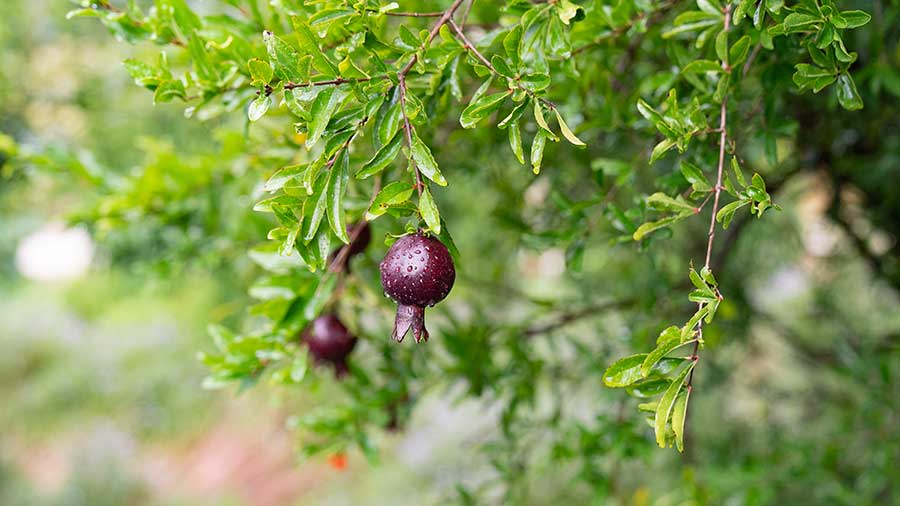
The fruit of a pomegranate tree, Punica granatum. A fruit, botanically speaking, is a mature ovary of a flower. Photo by Aric Allen. The Huntington Library, Art Museum, and Botanical Gardens.
Soon after Henry E. Huntington purchased the San Marino Ranch (formerly owned by James DeBarth Shorb) in 1903, he learned that many agricultural crops—such as avocados, peaches, and nuts—could be grown on the property in addition to oranges, which continue to be prolific on the site today. During the 20th century, The Huntington acquired many fruit trees from local nurseries, the United States Department of Agriculture, and other botanical gardens from around the world. The grounds became a trial garden, in this regard, with staff keeping detailed reports on how well the trees performed on the property.
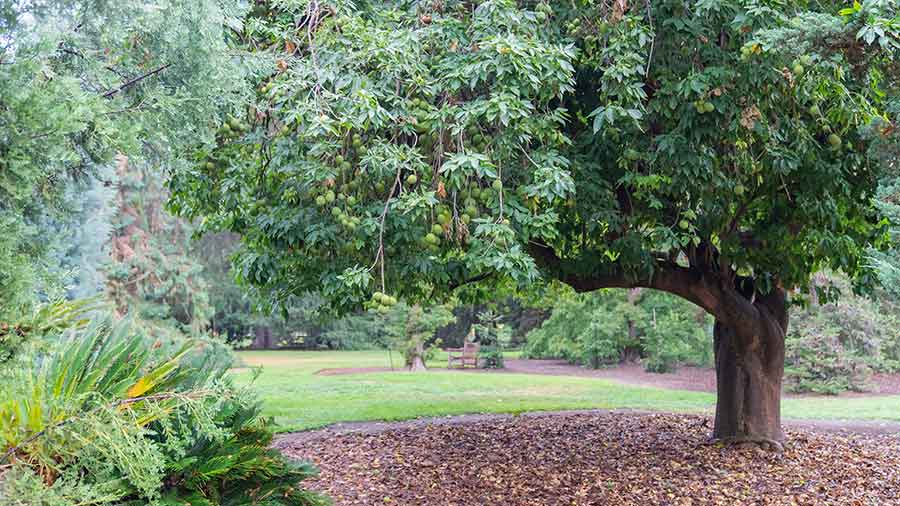
A white sapote tree, Casimiroa edulis, acquired by The Huntington in 1962. Photo by Aric Allen. The Huntington Library, Art Museum, and Botanical Gardens.
By the turn of the 21st century, The Huntington recognized a new need to educate people about the sources of their food; as a result, more of the property was devoted to the plants that feed us, the most notable area being the James P. Folsom Experimental Ranch Garden, an urban agricultural garden that explores and interprets optimal approaches to gardening in the semi-arid landscapes of Southern California. Today, you will find fruit trees not only in the Ranch Garden but interspersed among plants in almost every other Huntington garden—such as carob trees in the Desert Garden and pomegranate trees in the Shakespeare Garden. For our visitors, these fruit trees serve as an informal calendar, marking the seasons: the bright orange persimmons of winter, for example, or the soft white sapotes of summer.
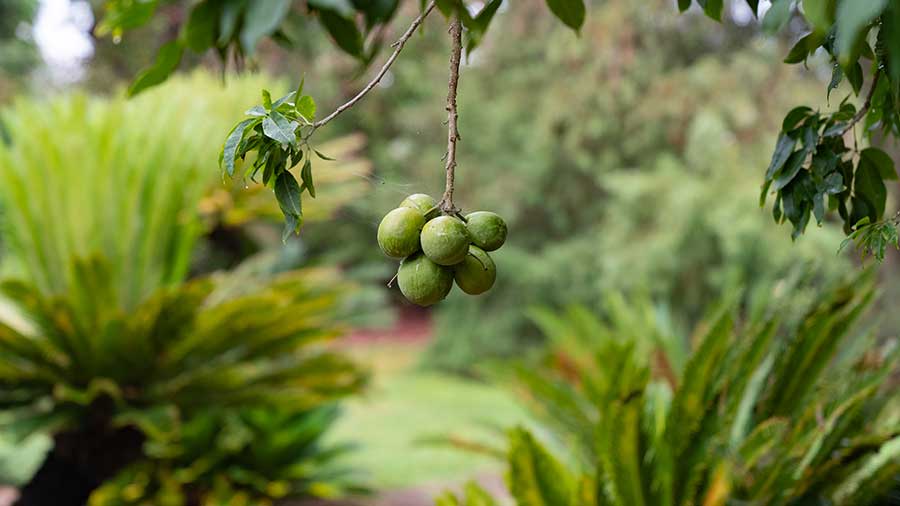
The fruit of a white sapote tree, Casimiroa edulis, acquired by The Huntington in 1962. Photo by Aric Allen. The Huntington Library, Art Museum, and Botanical Gardens.
Every now and then, visitors ask why they aren’t permitted to pick the fruit. It’s a great question. Fruits, like all plant materials at The Huntington, are important objects in our collections, just like the art works and the library books. They are meant to be on display in their natural state so that they remain available for education, propagation, and research.
Leaving fruit on trees provides them with context and allows us to watch how they develop, often changing color and smelling differently as they ripen. In our garden, ripe fruit is left on the ground when it falls, so that staff and visitors alike can appreciate the role a rotting piece of fruit plays in the garden ecosystem.
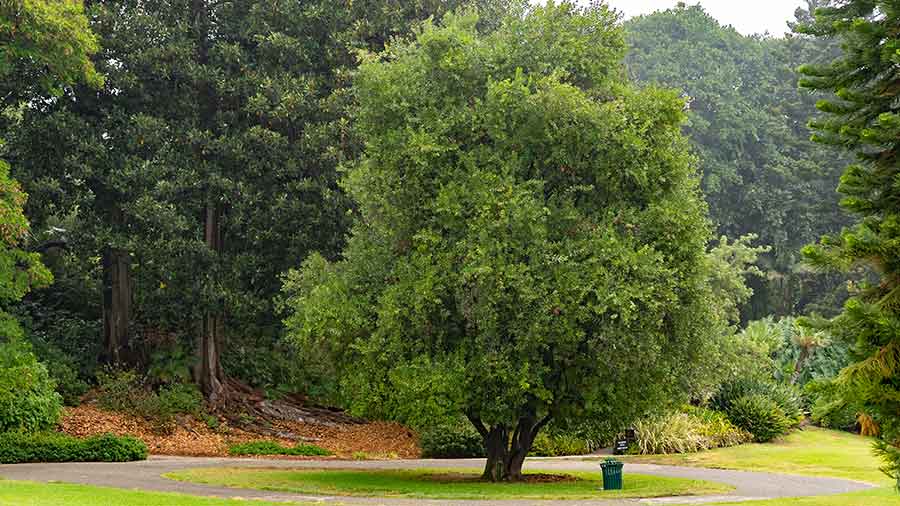
A macadamia tree, Macadamia integrifolia, grown from seed provided by the Brisbane Botanic Gardens in 1929. Photo by Aric Allen. The Huntington Library, Art Museum, and Botanical Gardens.
When left on the plant, some fruit offer perfect opportunities for teaching botany and engaging the next generation of gardeners. Other fruit come from plant families that are taxonomically interesting, such as the macademia nut, which is the only major edible crop in the entire Proteaceae family.
Another reason why we don’t pick and move fruit from our garden has to do with plant health and safety. Anyone who has ever experienced a stateline agricultural inspection knows that moving fruit can potentially spread pests and diseases. Some of the fruit on our property is actually quarantined by the Los Angeles Department of Agriculture. Our staff, and guests, have an obligation to follow these rules.
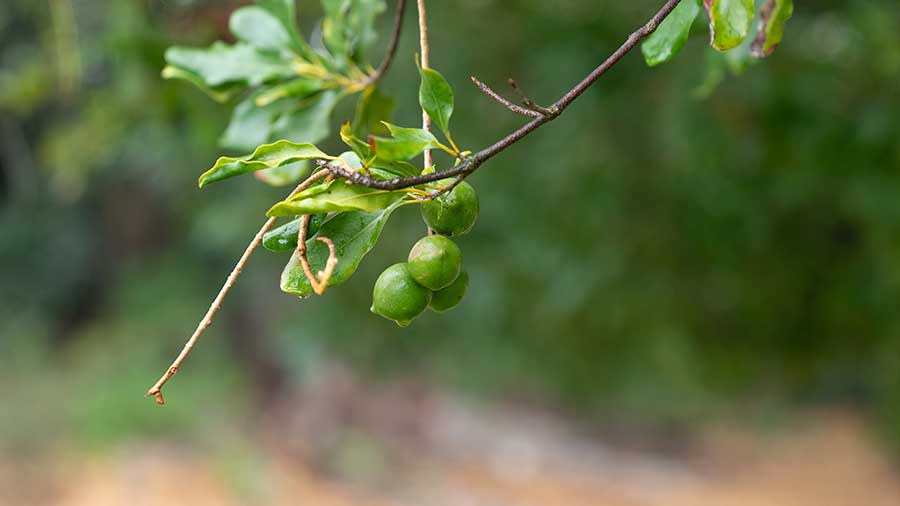
The fruit of a macadamia tree, Macadamia integrifolia, grown from seed provided by the Brisbane Botanic Gardens in 1929. Photo by Aric Allen. The Huntington Library, Art Museum, and Botanical Gardens.
Finally, going back to the oranges, we do donate the vast majority of this crop to local food banks. (Read more about our partnership with Food Forward, a local nonprofit agency that harvests fresh fruits and vegetables and then distributes them to hundreds of hunger relief agencies across Southern California.)
As Henry Huntington realized years ago, this property allows us to grow and showcase the plants that we rely on for food, and they are here for all our visitors to enjoy.
Sean Lahmeyer is the plant collections and conservation manager at The Huntington.